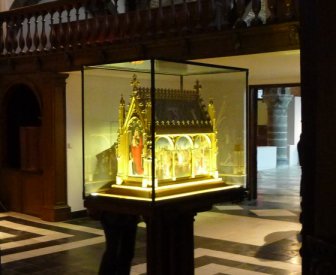|
From
the Gherkin to Martyrdom: |
|
|
An iconic London building with a resonantly historic address: 30, St. Mary Axe. St Mary is familiar enough. As with every other city, London has its fair share of St. Marys, many with interesting variations to set them apart: St Mary Staining, St Mary Colechurch, St Mary Abchurch, St Mary Aldermary, St Mary Woolchurch Haw, St Mary Woolnoth. The dedication of the church that gave this street its name was grand indeed: in full, it was 'St. Mary the Virgin with St. Ursula and the Eleven Thousand Virgins'. This was too much of a mouthful as far back as 1231, when the church was simply known as 'St Mary del Axe'. So why an axe? Some sources will tell you that the church gained its nickname from the local guild of skinners, though an axe doesn't seem an ideal tool for skinning a sheep. Another theory is that it was named after a local pub. The most romantic answer is that the church contained an extraordinary relic: one of three axes that were used to martyr all of those virgins. And did it? Who knows. St Mary's disappeared in the reign of Henry VIII. So why a study of this legend and its art? I have an interest in London and its churches and burial grounds, and St Mary Axe has always fascinated me. In addition, in St Ursula we have, at least in some versions of the story, a thorough-going British saint: her father's West Country kingdom was supposedly just down the road from where I live. I have always enjoyed Carpaccio's series of paintings showing the St Ursula narrative, now in the Accademia in Venice. But the real spur came in March of 2012. We went to Bruges for a short break, and there, in the Hans Memling museum, we were dazzled by this extraordinary and beautiful object: the Reliquary of St Ursula. |
|
|
| So St Ursula it had to be. |
|
|

